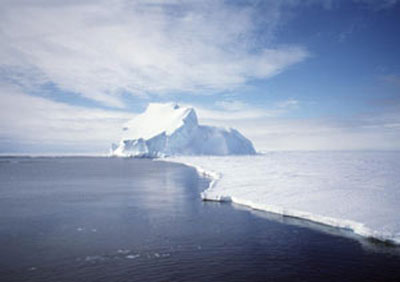Cold Water Thrown on Antarctic Warming Predictions

Antarctica hasn’t warmed as much over the last century as climate models had originally predicted, a new study finds. Climate change's effects on Antarctica are of particular interest because of the substantial amount of water locked up in its ice sheets. Should that water begin to melt, sea levels around the globe could rise and inundate low-lying coastal areas. The new study, detailed in the April 5 issue of the journal Geophysical Research Letters, marks the first time that researchers have been able to give a progress report on Antarctic climate model projections by comparing climate records to model simulations (these comparisons have been done for the other six continents). Information about Antarctica's harsh weather patterns has traditionally been limited, but temperature records from ice cores and ground weather stations have recently been constructed, giving scientists the missing information they needed. "This is a really important exercise for these climate models," said study leader Andrew Monaghan of the National Center for Atmospheric Research in Boulder, Co. Temperature gap Monaghan and his team found that while climate models projected temperature increases of 1.4 degrees Fahrenheit (0.75 degrees Celsius) over the past century, temperatures were observed to have risen by only 0.4 F (0.2 C). "This is showing us that, over the past century, most of Antarctica has not undergone the fairly dramatic warming that has affected the rest of the globe," Monaghan said. The gap between prediction and reality seemed to be caused by the models overestimating the amount of water vapor in the Antarctic atmosphere. The cold air over the southernmost continent handles moisture differently than the atmosphere over warmer regions. The models did, however, correctly capture the increases in snowfall over Antarctica in the late 20th century, followed by a decrease in the last decade. One reason that Antarctica hasn't warmed as much as other parts of the globe is the existence of the ozone hole overhead: It alters wind patterns, creating a swirling belt of winds around the landmass that keeps comparatively warm air from seeping in, preserving the continent's frigid temperatures. One important exception to this rule is the Antarctic Peninsula, which has warmed by several degrees, in part because winds there draw in warmer air from the north. Mixed verdict The Intergovernmental Panel on Climate Change has estimated that sea levels could rise by 7 to 23 inches (18 to 59 centimeters) globally this century, in part due to ice melt at the poles and from mountain glaciers. The new study, funded by the National Science Foundation and the U.S. Department of Energy, suggests that warming in Antarctica could offset this amount by about 2 inches (5 centimeters) if the continent warms by 5.4 F (3 C), as warmer air would hold more moisture and generate more snowfall, which contributes to the growth of the ice sheets, locking up any additional water in the these large masses of ice. That would mean a rise of only 5 to 21 inches (13 to 54 centimenters). But these projections are by no means certain — if melt from Antarctic ice sheets outweighed the snowfall that contributes to their growth, sea level rise could be higher. "The research clearly shows that you can actually slow down sea-level rise when you increase temperatures over Antarctica because snowfall increases, but warmer temperatures also have the potential to speed up sea-level rise due to enhanced melting along the edges of Antarctica," Monaghan said. "Over the next century, whether the ice sheet grows from increased snowfall or shrinks due to more melt will depend on how much temperatures increase in Antarctica, and potentially on erosion at the ice sheet edge by the warmer ocean and rising sea level." The findings of the study don't call into question model projections for other parts of the globe, Monaghan said. "The models are really doing quite a good job at simulating the 20th century changes over the six inhabited continents," he told LiveScience.
- Video: Global Meltdown Seen from Space
- Top 10 Surprising Results of Global Warming
- Timeline: The Frightening Future of Earth
Sign up for the Live Science daily newsletter now
Get the world’s most fascinating discoveries delivered straight to your inbox.

Andrea Thompson is an associate editor at Scientific American, where she covers sustainability, energy and the environment. Prior to that, she was a senior writer covering climate science at Climate Central and a reporter and editor at Live Science, where she primarily covered Earth science and the environment. She holds a graduate degree in science health and environmental reporting from New York University, as well as a bachelor of science and and masters of science in atmospheric chemistry from the Georgia Institute of Technology.









